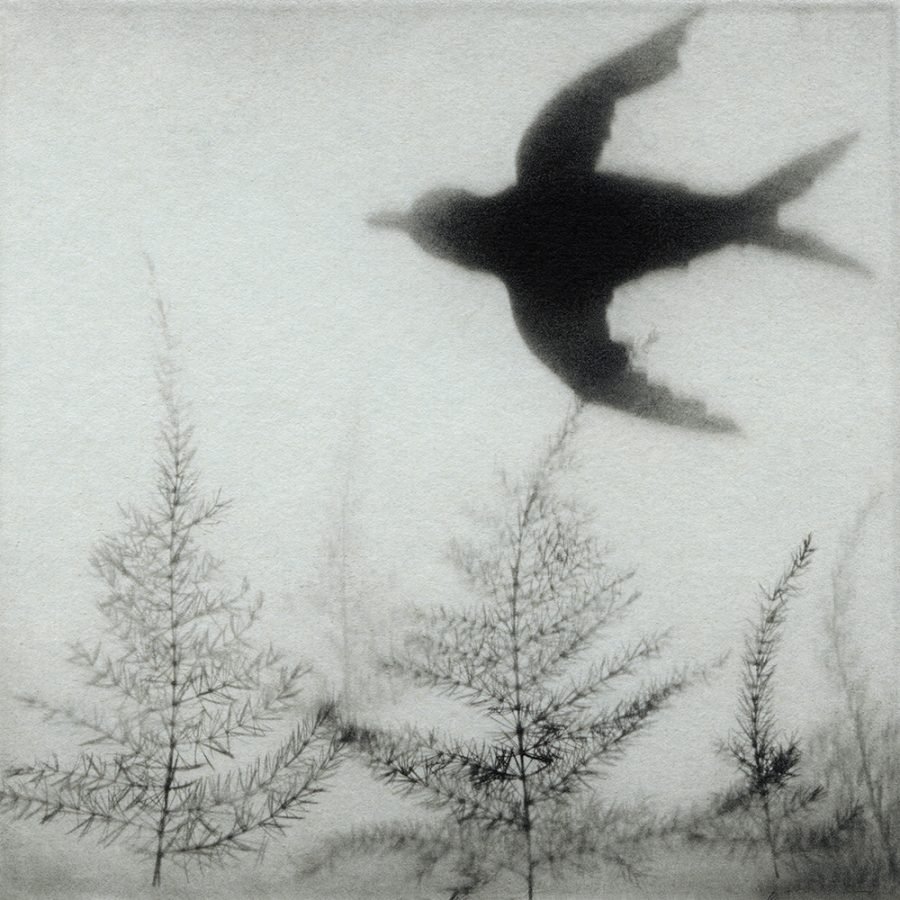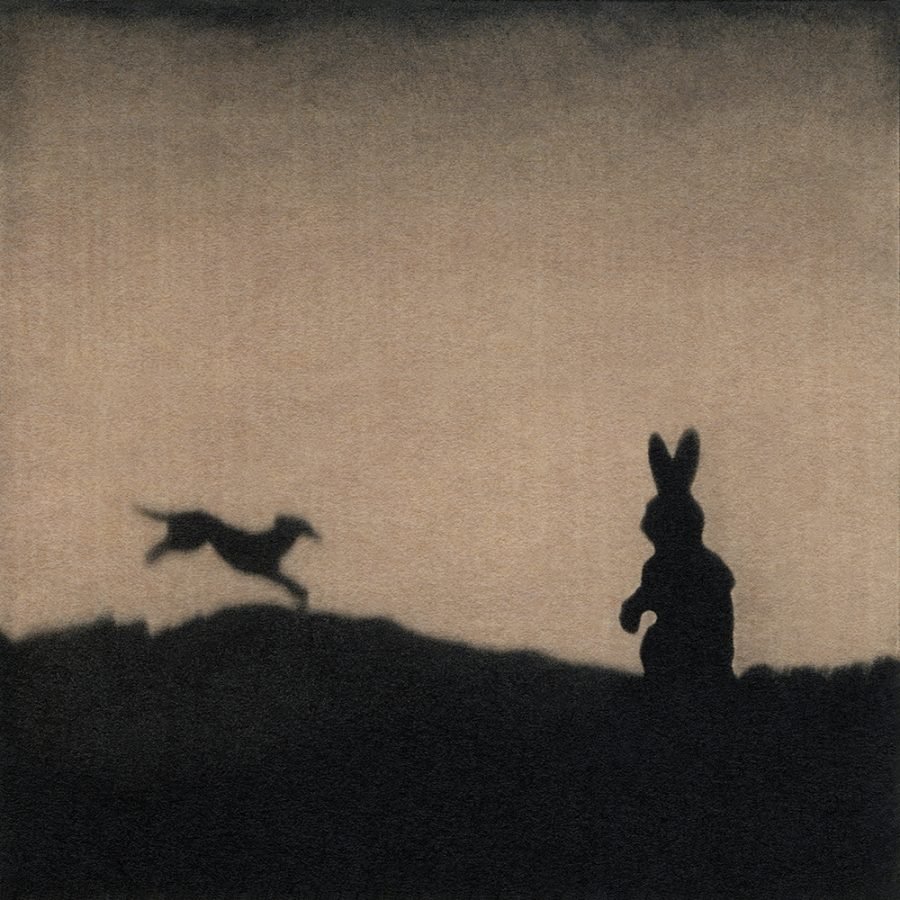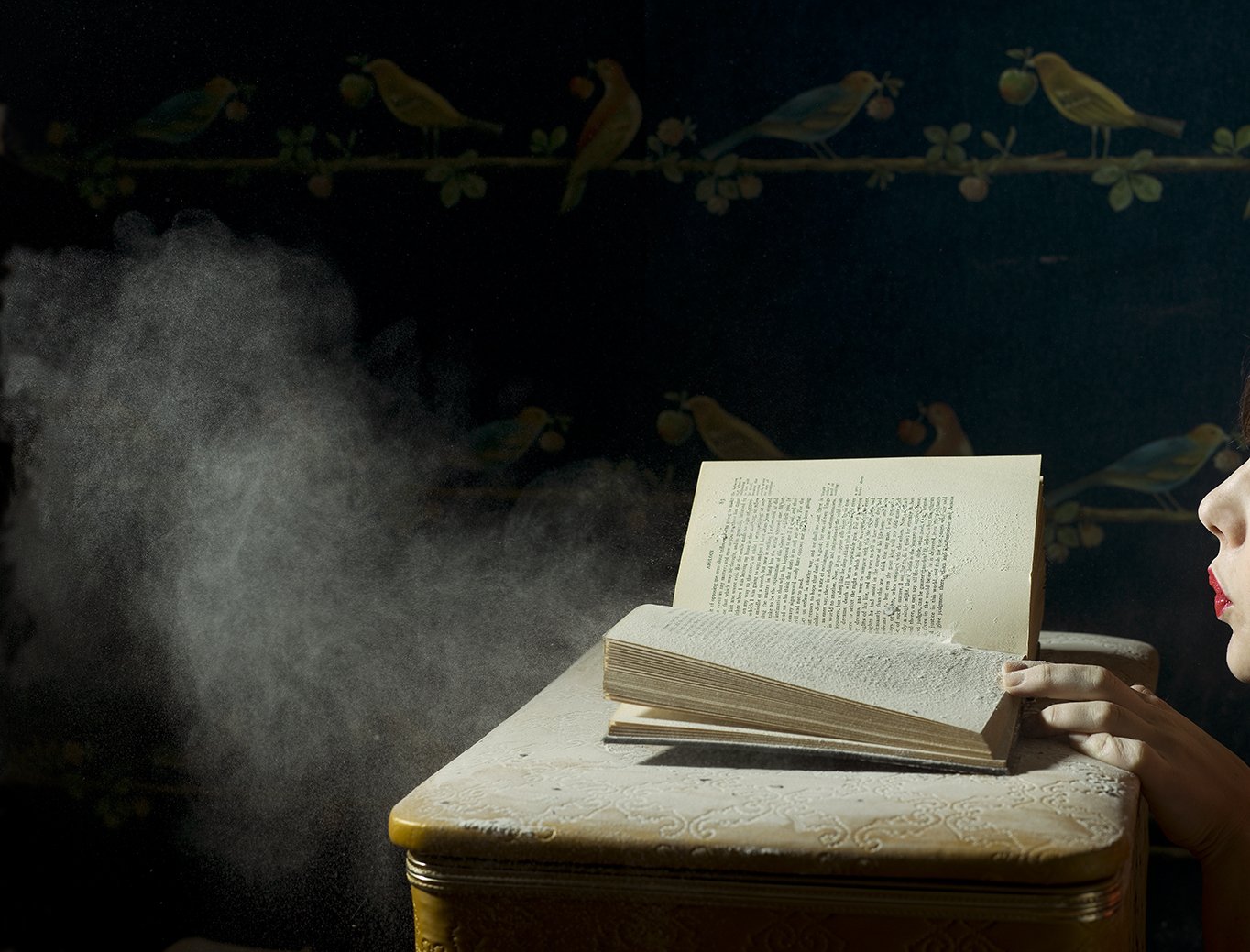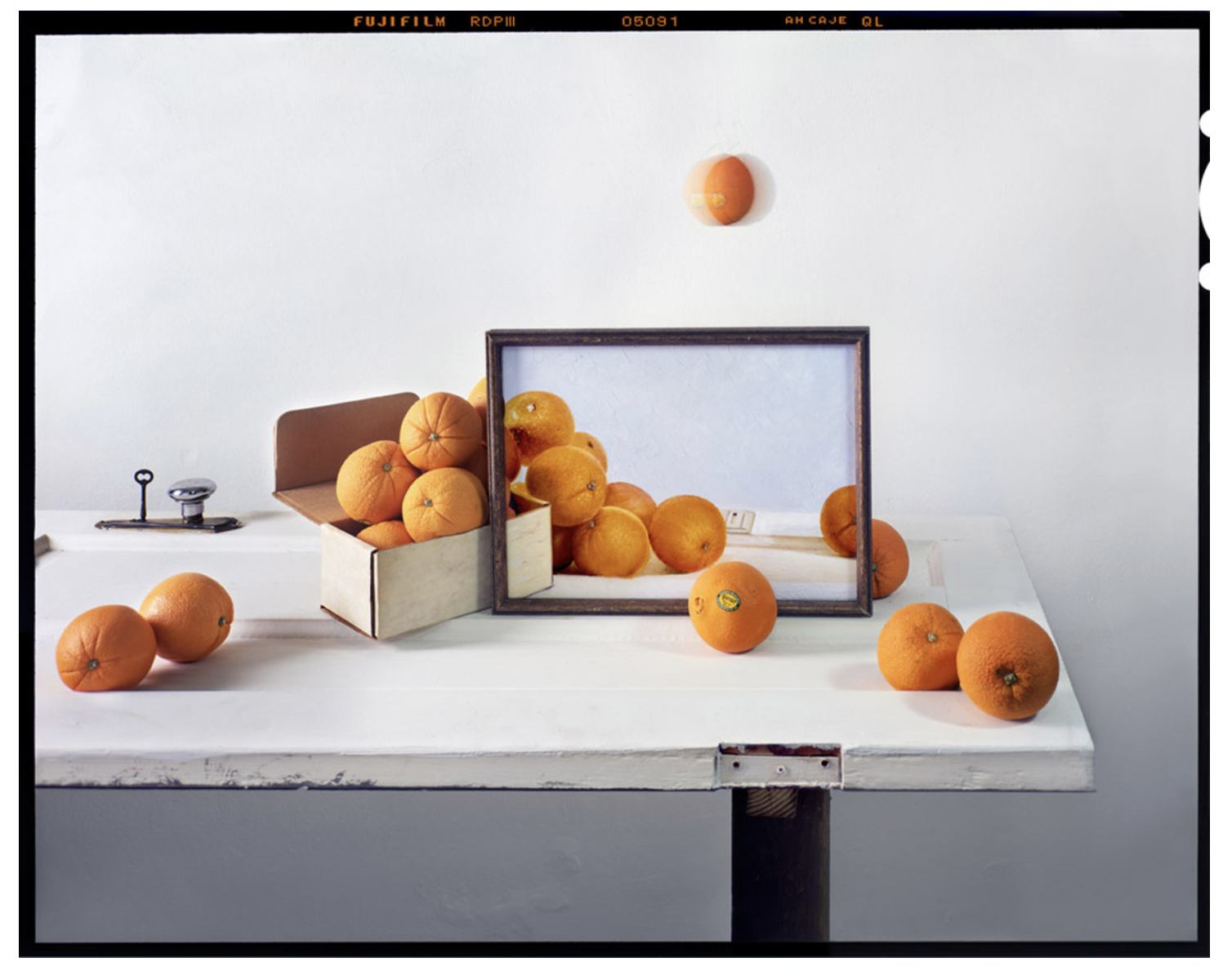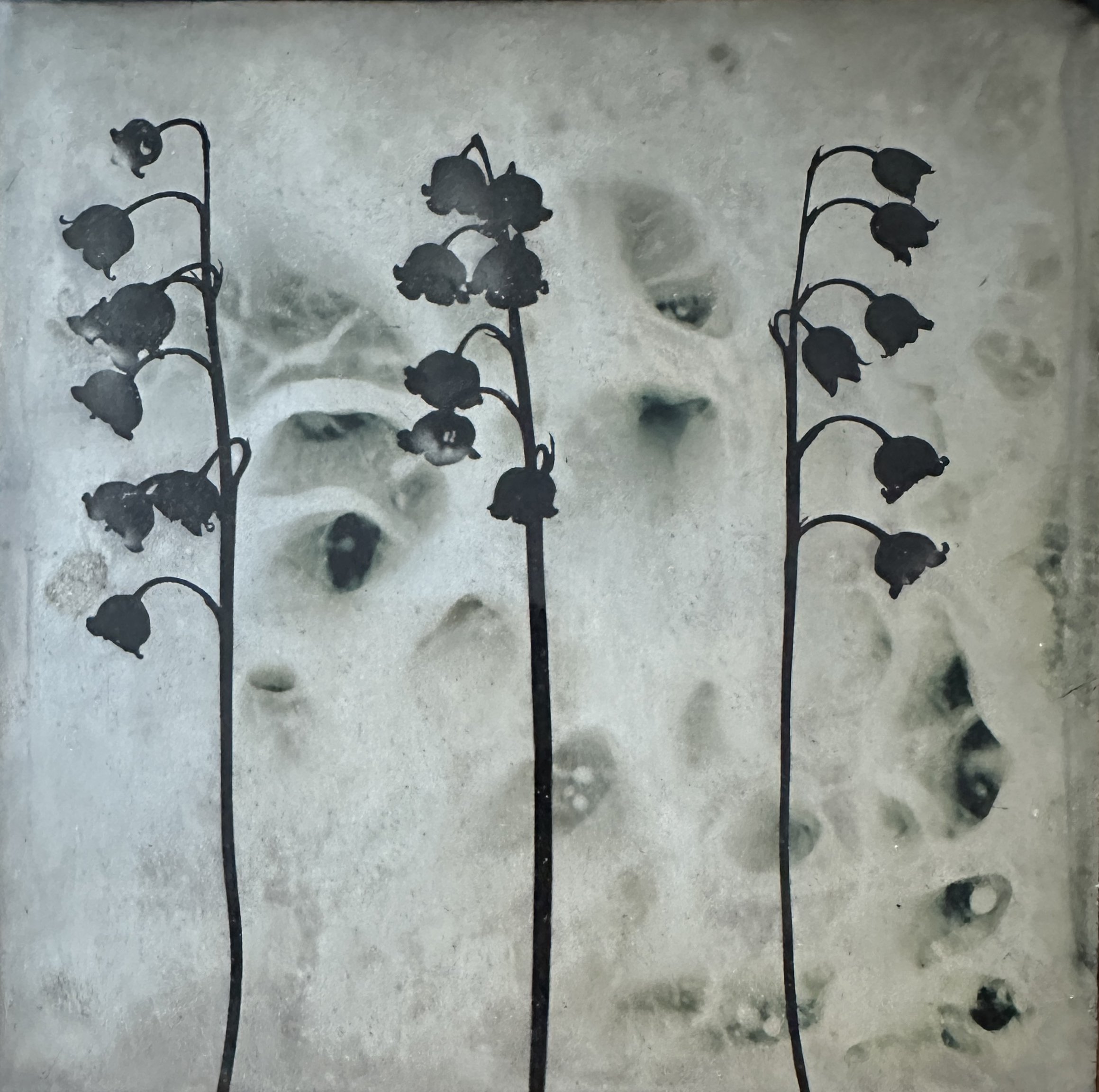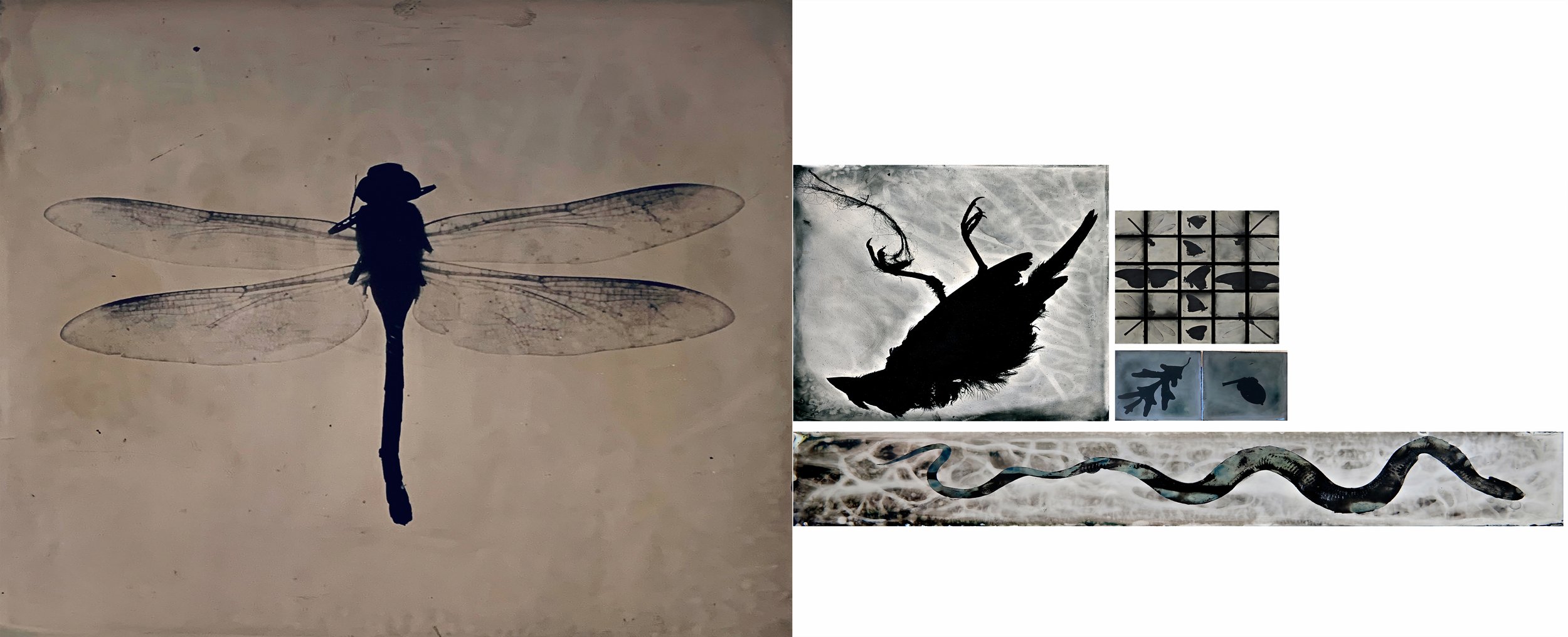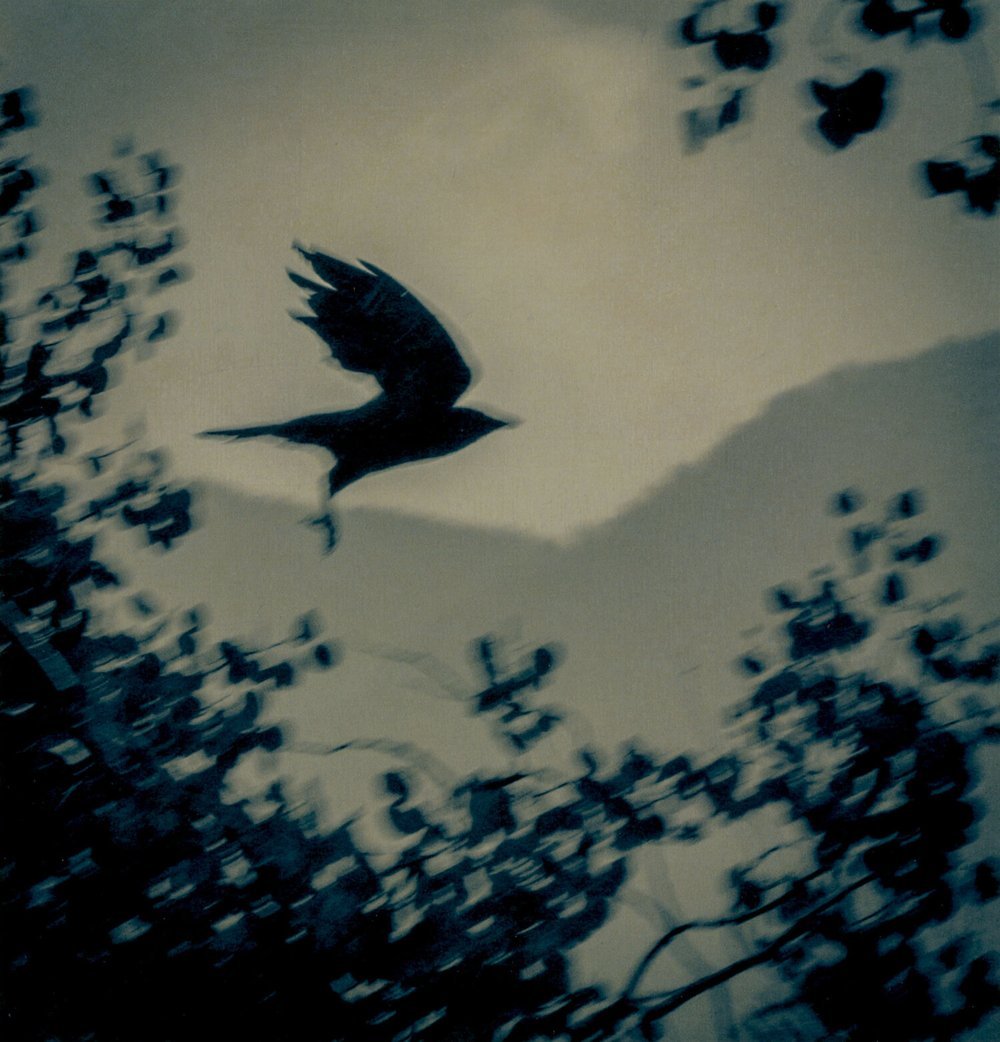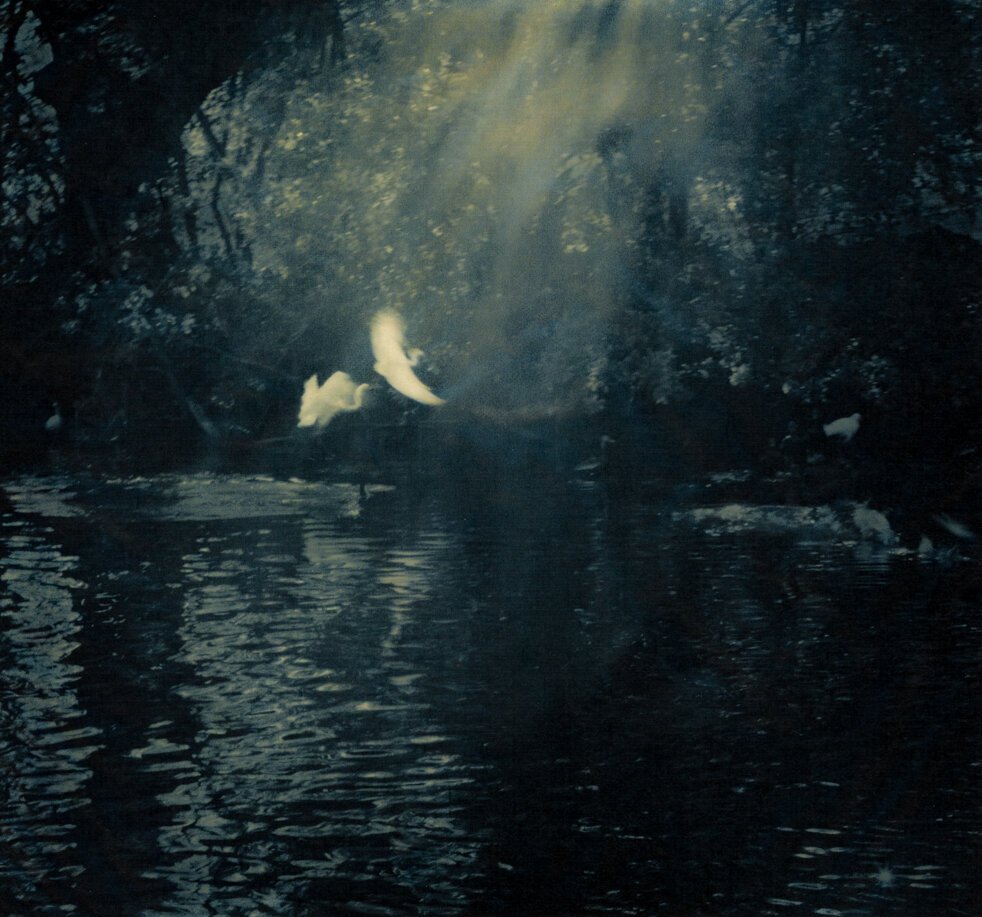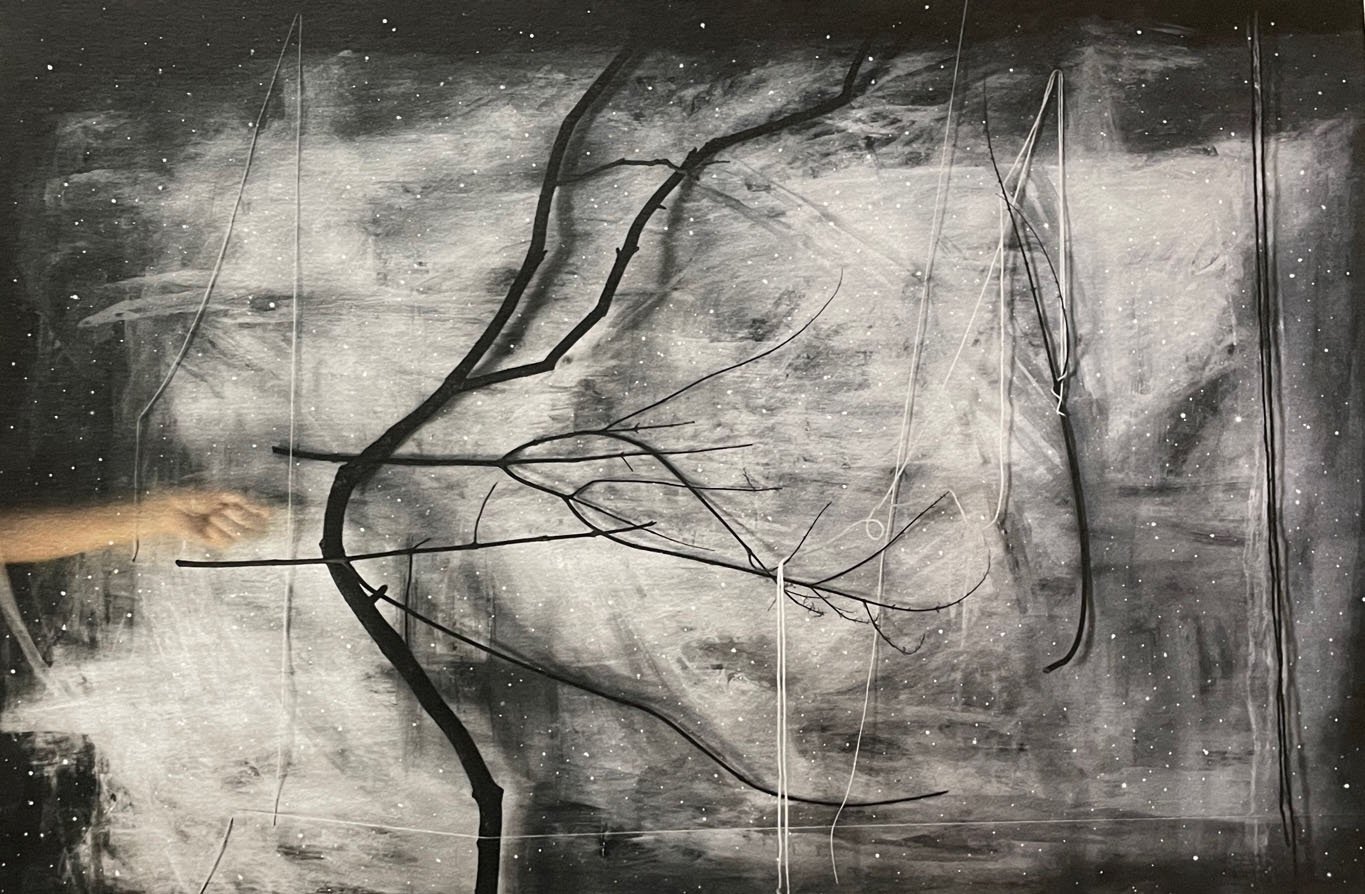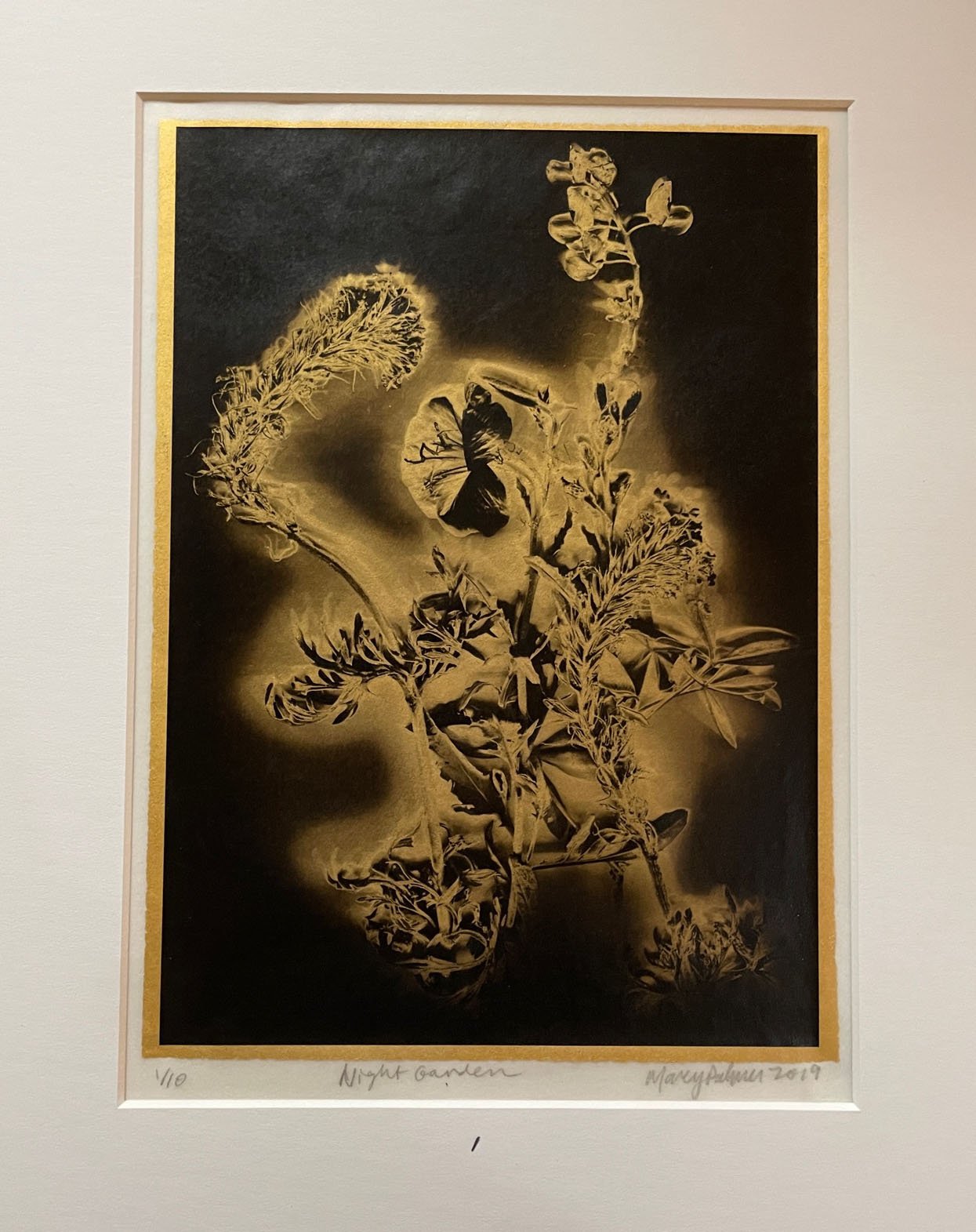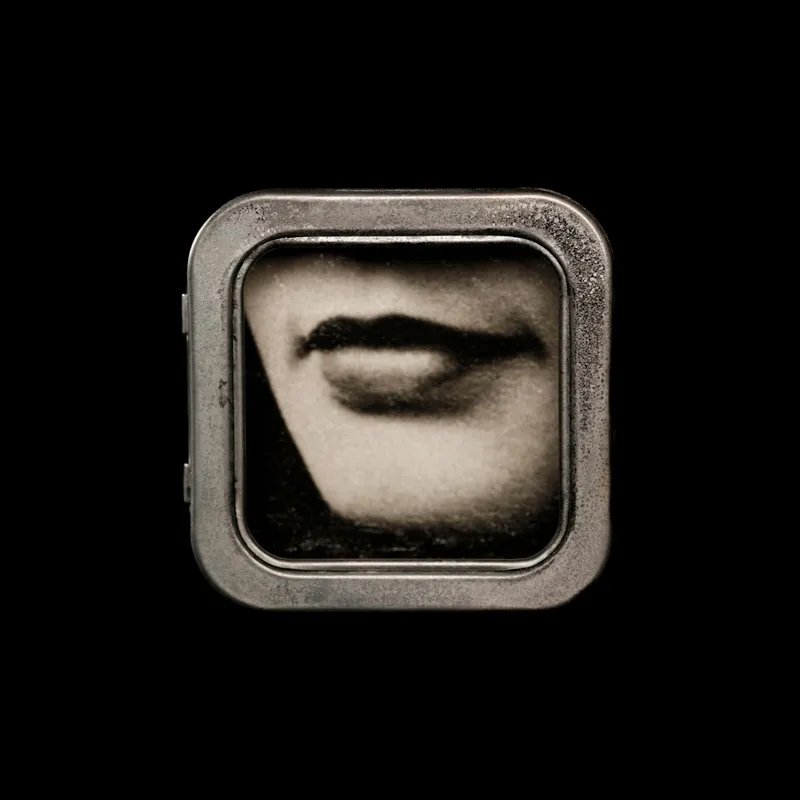The Paula Tognarelli Collection
April 5 - May 25, 2024
Artists from the Collection will speak about and share their current work
Friday, May 17, 5-8pm
REVIEW BY MAX WIENER FOR MUSEE, VANGUARD OF PHOTOGRAPHY CULTURE
Asia Kepka, Irene Klench, 2016, Aluminum print, 23.5 x 36 inches, Purchased at the Griffin Museum
IRENE KLENCH (PAULA TOGNARELLI) IN CAR, (IMAGE BY ASIA KEPKA) AND LYNN DOWLING FROM THE BOOK, HORACE AND AGNES: A LOVE STORY
IRENE KLENCH
Peering over her steering wheel, Irene Klench surveys the neighborhood. “Ohh, Mr. Freeman, you shouldn’t be watering your lawn during the shortage,” she says to herself as she jots down the infraction in her little black book. Irene heads out early in the mornings with a thermos full of Chock full o’Nuts and an old pair of binoculars. There is no stopping Irene when she’s on her fifth cup. Once she tried to make a citizen’s arrest on Horace when he was crossing the street. “It’s called jaywalking!” Irene shouts from her car window. “It’s called a crosswalk, Ms. Klench!” Horace shouts back as he hurries across the street. “Oh, sorry, Horace,” Irene says, slightly embarrassed. “I didn’t recognize you in your new jacket. I will call and get this crosswalk freshly painted tomorrow. It’s barely visible,” she admits before lurching off in her old car. Irene takes the neighborhood watch very seriously. Nobody is above the law. Not even her. (The story of Horace and Agnes (and their friends) is a story about unconditional love, life, acceptance, and friendship.)
Personal art collections are always a form of self portraiture and our new exhibition, The Paula Tognarelli collection is no exception. It’s prodigious; about wonder, wit, moments, connections to individual artists, and they all have a dreamy and whimsical perspective. The romanticism of the collector shines through. The images also speak about the process of making art and the breadth or modes of expression in contemporary photography. The viewer will notice that there is an optimism throughout the compilation that makes spending time with these photographs delightful. It speaks to Tognarelli’s heart and eye. We appreciate the opportunity to share this exhibit with you and our investigations into collectors and collections.
This exhibition is the beginning of our 2024 season. We’ve decided to start each new season with a collector’s collection. We want to celebrate the individuals who keep us making, exhibiting and responding to our ideas. These connoisseurs think enough of our process and its outcome to want to take home our creative product. We as viewers get to peek at the piles of works that were stashed, hoarded, acquired intuitively or incredibly decisively- ultimately representing the journey and the intent of the collector. The money these things cost, and their value over time is of interest. How do they store their works and what will they do with all this accumulation? What makes a collector and why do institutions collect in a post digital age? We will have talks and a new program, Print Night on the first Wednesday of every month to investigate these topics. — Denise Froehlich, Director of MMPA
Biography
In 2021 Paula Tognarelli retired as executive director of the Griffin Museum of Photography a position she held since 2007. During her tenure she was responsible for the curation of 54 exhibitions annually. Paula holds a MS degree in Arts Administration for Boston University, a BA from Regis College and is a graduate of the New England School of Photography. Since her retirement she has been immersed in collaborative projects and engrossed in Firestarters, a 30 year old nonprofit that helps artists jumpstart their careers and work projects.
Her early career path began in the printing industry in 1976. She first worked for Color Picture Publishes until 1978 after which she joined United Lithograph in Somerville Massachusetts as a film assembly craft person. She worked herself up the ladder and became Director of Technology in 1991, a position she held until 1999, at which point she became Vice President of Operations (1991 to 2001) While attending the Boston University Art Administration’s Graduate Program she started her internship at the Griffin, where, from 2001 to 2007 she went from intern to Deputy Director. She was executive Director from 2007 until her retirement in 2021.
Paula was a panelist and speaker at many photography events including MacWorld and Color Connections. She was a juror of over 100 exhibitions, both nationally and internationally. She taught classes at numerous locations, including the Griffin Museum as well as the Maine Media Workshops. MMPA has recently welcomed Paula to our advisory board.
Nina Weinberg Doran, Untitled, 1/6, 2023, Pigment print, 18.75 x 12.75 inches, Gift of the artist
Jan Pieter van Voorst van Beest interviews Paula Tognarelli about collecting
Jan Pieter: During your life and specifically during your tenure at the Griffin you have been living among photographic images. What made you want to collect and how did you start your collection?
Paula: Even as a child I responded best to pictural sentences rather than the spoken or written word. In pictures I’ve always understood the essence of a visual statement almost immediately. Reading or speaking for me requires too many internal interpolations for me to get quickly to meaning. I’m sure it’s some kind of undiagnosed deficiency but it’s all water under the bridge now. In my lifetime I’ve found my own work arounds for whatever the issue is/was.
In my whole life I’ve surrounded myself by visual sentences whether they were cut from magazines or made as artwork. How lucky I was to have found professions that I could use my innate skills.
I’ve always been a collector of things. I collected chestnuts in a sock that I stored under the cellar bulkhead of our childhood home. I would pull the chestnuts out occasionally to admire the smoothness of their shells and their remarkable color. I’ve collected snails in a shoe box to admire their mysterious markings on the sides of their cardboard homes. My mineral collection rivaled the rock collections of any MIT scientist. And books have been my obsession for many moons. I joke that the books are the answers to any question I may have in life, right at my fingertips.
I collected art more after working in the arts. I found that artists provided such personal gifts to the viewer in their visual narratives. Often, I would sit in the galleries with the artwork after everyone went home. I found that work I didn’t at first like, grew on me. Time brought understanding. I often felt I needed to recover each time exhibitions closed. And that is how I began to collect on a larger level.
There is a great comfort surrounding oneself with artwork. The artwork itself contains the artist’s essence. The meanings for the collector mature too with the passage of time.
Jan Pieter: First, when browsing through the 300 images that you sent to us and then looking more intensely through the 70 + images Denise finally picked, I was often struck by the questions the photographs in this collection asked rather than the answers they provided. Do you think a good image asks questions rather than provide answers?
Paula: I don’t think it is a question of artwork being good or bad imagery. I have often not liked work upon first encountering it. As I spend time with an art piece, I grow to appreciate it more when I spent time with it as one can do when hosting an exhibition. I never listen to my first thoughts on artwork as it proves me wrong over and over. Also everyone’s aesthetic is different. I also think that curating imagery brings out the strength of images. It is like building a symphony. Each image contributes to the final strength of the string of images. I supplied the images alpha by first name of artist. I did not curate them. As a body of work. By supplying a string of images that works together one strengthens the weaker image but the strength and unity of the imagery is in the whole and not in one standout piece. I guess orchestration of imagery is the best way to describe it.
I also like to look at images without reading artists statements. I like to discern my own meaning. Sometimes when I find something out about a piece that I didn’t know it changes everything. Like for instance in the work provided by me there are two images by Bill Chapman supplied. One is an image of someone holding baseballs and another of two shoes sitting on the ground in a baseball stadium. What the viewer doesn’t know is that Ernest Withers is holding those baseballs and those shoes standing alone on the ground of the stadium are Ernest Withers’ shoes. Making good and bad judgements quickly is lazy. And I have been guilty of much of that in my past. Also I have a very broad aesthetic.
Jan Pieter: I found some clear narrative running though many of the chosen images. Of course some of that narrative might have come out of the curation by Denise but there was a fun one running through pictures by Jaye Philips (Rhythm of the Bones), Jennifer Shaw ( Bird/ Bunny), Meg Birnbaum ( Birds) and some of Rhonda Lashly Lopez’ work. I found other interesting connections between the work of Melissa Berger, Marcy Palmer and Karin Rosenthal. These images all seemed to allow new discoveries after an extended investigation. So when collecting, do you feel the building in the collection narrative is intuitive or is it by design?
Paula: I have been a curator for so many years that I believe it is now intuitive. That does not mean that I can’t branch out. At my age I think now about what I have currently to augment or what do I want to live with. Two very different ways of collecting. I also have much more work I own that you do not even see in what I provided. There’s only so much I could do to share some of my collection with you.
Jan Pieter: How do you feel the collection reflects on you?
Paula: I believe it reflects very much on me and my experiences in life and the things that have shaped me. No one can predict what will appeal to me.
Jan Pieter: How would you describe your collection and the process?
Paula: My collection is eclectic but I find unity in it by how I hang it in my home. I am very possessive about my collection and will probably part with it only at my passing. I will however have prepared in advance for its distribution.
Jan Pieter: How do you live with the collection? What do you display in your house, how often do you swap work around?
Paula: I live with it in every room of my home including the bathroom. I hang it Atelier style. I look for unity in its hanging. I have a studio offsite that I hang work in as well. And for the work I haven’t hung yet I have storage facilities. I’ve been working to have it all on the walls or in a semblance of order that I understand. I don’t swap it out. Once I build the relationships of the imagery, I like to keep them that way. Sometime a piece may be inserted here and there and require slight rearrangements.
The Paula Tognarelli Collection
Jennifer Shaw
Jennifer Shaw, Swallow, Original chine colle photogravure, 2022, 4 x 4 inches Both purchased from the artist.
Jennifer Shaw, Hare and Hound, Original chine colle photogravure, 2022, 4 x 4 inches
Aline Smithson
Aline Smithson, Fugue State #12, From Fugue State Revisited, 1/10, 2021, Corrupt digital scan, Cyanotype overlay on pigment print, 27.75 x 22.5 inches, Purchased from the Griffin exhibition in 2021
Carl Bower
Carl Bower, Miss Coffee from Chica Barbie, 1997, Silver print, 6.625 x 9.875 inches, Portfolio review gift of the artist
Toni Pepe
Toni Pepe, Apology, From the Angle of Repose series, AP, 2007, Lambda C Print, 30 x 39.5 inches, Purchased from the artist
Diane Hemingway
Diane Hemingway, Wolf, From the Wild Cosmos, 2018, Pigment print, 13. 25 x 19.25 inches, Purchased from the Griffin Museum during exhibition.
Adrienne Sloane
Adrienne Sloane, Mona, 2022, Printed puzzle as reassembled object, 12.125 x 12.125 inches, Purchased from the Cambridge Art Association
Tiziana Rosso
Tiziana Rosso, Backstage a few moments before the prima, 2015, Pigment print, 9 x 13 3/8 inches, Gift of the artist
Lou Jones
Lou Jones, Globe from Distressed Memories, 2003, Silver print, 14 x 11 inches, Purchased from the artist.
Edie Bresler
Edie Bresler, Anonymous, 1910/2019, Van Dyke print with embroidery, 20.5 x 14 inches, Purchased from the artist 2023
Ruth Orkin
Ruth Orkin, Comic Book Readers, West Village, NYC, 1947, Silver print, 14 x 17.5inches, Purchased from the Ruth Orkin Collection
Betsy Schneider
Betsy Schneider, Barracuda, 2007, Inkjet print, 15.5 x 19.5 inches, Purchased from the artist in portfolio review
Meg Birnbaum
Meg Birnbaum, Fly by night, 2004, Pigment print, Holga image, 7 x 7 inches, Purchased from an exhibition at the P Town Art Museum
Kay Kenny
Kay Kenny, Orchard House, 2012, Pigment print, 4.5 x 4.5 inches, Purchased from the Center for Photography in Woodstock
James Mahoney
James Mahoney, Running the Family, AP, 2021, Pigment print, 10.25 x 20.5 inches, Gift of the artist
Rich Turk
Rich Turk, Great blue heron, 1/1, 2016, Pigment print, 16 x 20 inches, Purchased during an exhibition at the Griffin Museum
Catherine Wilcox- Titus
Catherine Wilcox- Titus, Animal Locomotion, Barn owl, Date, Pigment print, 16.25 x 20.375 inches, Purchased at the Griffin Museum exhibition
Allison Plass
Alison Plass, Harlan in Blue, From hold me tight, 2/10, 2020, Pigment print, 21.25 x 25.5 inches, Purchased in RICP exhibition 2023
Aline Smithson
Aline Smithson, Twilight, From the bittersweet poignancy of things, 2021-2022, Pigment print, 7.75 x 5.5 inches, Purchased at the Center for Photography Auction
Jane Fulton alt
Jane Fulton Alt, Smokin Log, 35/100, 2018, Pigment print, 15 x 14.025 inches, Collectors Club Print Gift from Jane for Photo NOLA review
Holly Roberts
Holly Roberts, Sperm and Egg, 2006, Mixed media, 30.25 x 36 inches, Gift of the artist
Wendi Schneider
Wendi Schneider, Flamingo, ed. 10, 2012, Pigment print on vellum over white gold leaf, 9 x 6 inches, Purchased during a Griffin Museum exhibition
Amani Willett
Amani Willett, Hermit Erased, 2017, Pigment print, 11 x 14 inches, Purchased at Silver Eye Auction in 2023
Amanda Boe
Amanda Boe, Contrail and Cloud, AP, 2011, Pigment print, 12.5 x 12.5 inches, Purchased in the Griffin Museum Sky Exhibition
Karin Rosenthal
Karin Rosenthal, Contemplation, 10/35, 2004, Pigment print, 12.25 x 16.25 inches, Purchased from the artist
Jaye R. Phillips
Jaye R. Phillips, Rhythm of the bones, ed.10, 2007, Pigment print, 9.5 x 13.4375 inches, Purchased from the Griffin Museum during exhibition
David Whitney
David Whitney, Solitude, 2018, Pigment print, 10 x 10 inches, Purchased at a Griffin Museum exhibition
Diana Nicolette Jeon
Diana Nicolette Jeon, Nights as inexorable as the sea, Volume 1, 1/3, 2016, Pigment print, 4 x 28 inches, Purchased from the artist in 2016
Sarah Hadley
Sarah Hadley, Traghetto Crossing, From Lost Venice, 2/11, 2019, Pigment print, 7 x 4.6875 inches, Purchased from the book publisher
Anne Piessens
Anne Piessens, Flight, 2021, Pigment print, 8 x 8 inches, Purchased from the Griffin exhibition
Eva Timothy
Eva Timothy, Freedom song, Ed. 50, 2023, Pigment print, 11.75 x 11.75 inches, Gift of the artist
Karen Klindlinst
Karen Klindlinst, The Egret Trilogy, Trio from Tidal Dreams series; The Scout, The Congregation, The Hunter, 3/10, 2/10, 1/10, 2018, Pigment on vellum and white gold leaf prints, 7 x 5.5 inches each, Purchased Davis Orton gallery
Becky Behar
Becky Behar, Dedicated, 2/10, 2019, Pigment print, 16.25 x 11 inches, Purchased from the artist at the Brandeis University’s Women’s Research Center
Charles Maniaci
Charles Maniaci, MadHatter, 2019, Inkjet print, 16.25 x 16.25 inches, Purchased at the Griffin Museum exhibition
Sunjoo Lee
Sunjoo Lee, Jaqueline from Memorabilia 3 series, 2017, Digital C print, 20 x 16 inches, Purchased from an exhibition at the Griffin Museum
Jennifer Georgescu
Jennifer Georgescu, Seeking to connect, From Systems of independent terms, 2011, Inkjet print, 15 x 44 inches, Purchased from the Griffin Museum during exhibition
Astrid Reischwitz
Astrid Reischwitz, Regret #1, AP, 2013,Pigment print, 13.75 x 17 inches, Gift of the artist 2022
Yorgos Efthymiadis
Yorgos Efthymiadis, Mona Pizza, 1/7, 2017, Inkjet print, 18.25 x 24 inches, Purchased at the Griffin Exhibition
Carol Golemboski
Carol Golemboski, Bending Spoons, From Psychometry, AP, 2004, Toned silver print, 17 x 18.25 inches, Purchased from PRC auction
Vicki Stromee
Vicki Stromee, Dreams, 1/20, Inkjet print, 9 x 9 inches, Purchased at the Griffin Museum exhibition
John Chervinsky
John Chervinsky, Studio Physics, Oranges, Box and Painting on door, Ed. 15, 2011, Pigment print, 15.25 x 19.625, Gift of the deceased artist’s wife, 2024
John Chervinsky, Time Machine, Frames of reference from CaC03, 2/10, 2005, Pigment print, 20.5 x16.5 inches, Special edition purchase from PRC Member print program
Susan Goldstein
Susan Goldstein, #24 From the New American West, 2/15, 2001, Pigment print, 15 x 15 inches, Griffin Museum Auction purchase
Granville Carroll
Granville Carroll, Selah, From Because the Sun hath looked upon me, AP, 2020, Inkjet print, 7.25 x 7.25 inches, Gift of the Rochester Institute of Technology for reviewing
Tobia Makover
Tobia Makover, Take Flight, 2020, Pigment print waxed, 8 x 8 inches, Purchased from the artist
Joanne Dugan
Joanne Dugan, Dune Shack, Cyannotype #8, 2019, Cyanotype photograms on gelatin silver paper, 8 x 10.25, Purchase from the artist
Stefanie Timmerman
Stefanie Timmerman, Dynamism with a dog on a beach, Ed. 7, 2017, Cyanotype, 6.75 x 4.75 inches, Purchased from the artist
Marcy Juran
Marcy Juran, Misty Morning, 2018, Waxed pigment print, 12 x 18 inches, Purchased from the Griffin Museum
Gayle Stevens
Gayle Stevens, Untitled, 2014, Collodion tintypes, This is a series of pieces from 12 x 12 inches to 1.5 x 1.5 inches (scroll left to right on the second image above). Purchased from the artist
Susan Murie
Susan Murie, Another Day, 2022, Cyanotype on paper, 32.25 x 24.25 inches, Purchased from the Cambridge Art Association
Rhonda Lashley Lopez
Rhonda Lashley Lopez, Storm Clouds, Denver, 2/8, 2021, Pigment on Gampi, Gold/palladium leaf, 10. 5 x 10 inches, All purchased from the Griffin Museum during the exhibition
Rhonda Lashley Lopez, Flying in the rain, 4/8, 2021, Pigment print, 10.75 x 10.5 inches
Rhonda Lashley Lopez, Transcendence, 2/3, 2016, Pigment on Gampi with 24k gold leaf, 14.5 x 15 inches
Rhonda Lashley Lopez, Looking Back, 2/8, 2021, Pigment on Gampi with gold/palladium leaf, 9.5 x 7.5 inches
Darcie Sternenberg
Darcie Sternenberg, The Pear, 2010, Pigment print, 11 x 14.5 inches, Gift of the artist
Asia Kepka
Asia Kepka, From Bridget and I, Flowers, AP, 2004, Inkjet print, 15.25 x 12.75 inches, Purchased from the Griffin Museum
John Willis
John Willis, Sunka Wakan Na Wakanyeja Awicaglip (To bring back the horse and child) 2004, Pigment print, 18 x 22 inches, Purchase from PRC auction
Eleonora Ronconi
Eleonora Ronconi, Perlos y Medallas, 1/10, Pigment print, 8.75 x 11.75 inches, Purchased at the Griffin Museum exhibition
Valerie Burke
Valerie Burke, Rocky Mountain Trees, 2020, Inkjet print with gold leaf Gampi paper, 12.25 x 10.375inches, Purchased at the Griffin Museum exhibition
Marcy Palmer, Extended Grasp, AP, 2018, Pigment print, 11.75 x 15 inches, Both gift of the artist
Marcy Palmer, Night Garden, 2/10, 2019, 24k Gold leaf on vellum with varnish and wax, 10 x 10 inches
Judy Haberl
Judy Haberl, Arboreal Dreams # 14, Levens Hall Kendall, Cumbria, England, 2016-2018, Printed on aluminum, 5 x 7 inches, Purchased from the Gallery Kayafas during exhibition
Diane Yudelson
Diane Yudelson, East African Crowned Cranes, 11/20, 2014, Pigment print, 21.75 x 17.5 inches, Purchased at the Griffin Museum exhibition
Rebecca Sexton Larson
Rebecca Sexton Larson, Philophobia: Fear of Love, From the Book of Fears series, Ed. 20, 2021, Pigment print, 11.25 x 9.25 inches, Purchased in Center for Photography Auction
Nic Nicosia
Nic Nicosia, Love and Lust #11, AP, 1990-1997, Chromogenic development print, 14 x 11 inches, Gift of the artist during review
Sally Chapman
Sally Chapman, Apple Saint, 2022, Pigment printed book, 33 x 8 inches (5.5 x 5.5 inches folded), Purchased from the artist
Richard Alan Cohen
Richard Alan Cohen, Moonlit #1, From the Moonlit series, 1/10, 2018, Pigment print, 15 x 10 inches, Purchased during an exhibition at the Griffin Museum
Susan Lirakis
Susan Lirakis, To the Sea, 2017, Pigment print, 14 x 12 inches, Purchased at the Griffin Museum exhibition
RJ Kern
RJ Kern, Escape, 5/25, 2016, Pigment print, 8 x 10.75 inches, Purchased from the artist
Ellen Harasimowicz
Ellen Harasimowicz, Approaching Storm, 1/15, 2021, Pigment print, 10.25 x 14.5 inches, Purchased at the Three Stones Gallery in Concord MA
Nancy A. Nichols
Nancy A. Nichols, Self portrait in hospital gown, From Pretty sick, 1/8, 2022, Pigment print, 18 x 12 inches, Purchased at the Griffin Museum during exhibition
Heidi Kirkpatrick
Heidi Kirkpatrick, Storyteller + Monocle, 2/5, 2013, Film positives layered over anatomical drawing, paint, glue, graphite, resin, housed in a metal tin finessed with fire, 2.25 x 2.25 x .625 + 3.375 x 1 inch
Roxanne Darling
Roxanne Darling, I am 65 and in full bloom, 4/5, 2018, Pigment print, 4.5 x 4.5 inches, Purchased from the Center for Photography at Woodstock
Cathy Cone
Cathy Cone, Rock, 2020, Piezography on photo rag paper, 13 x 13 inches, Purchased from artist at Griffin Museum exhibition
Rick Colson
Rick Colson, False History of the nude; A contemporary fable, 1/25, 2015, Pigment print, 6 x 8 inches, Gift of the artist
Elaine Duigenan
Elaine Duigenan, House of Spirits, /10, 2008, 15.5 x 21 inches, Purchased from Klompching gallery 2023
Khristine hopkins
Khristine Hopkins, Our last summer at snow street, Katy upstairs resting, 1987, Infrared film, hand colored silver print with oil paint, 7 x 4.625 inches, Purchased from an estate sale in Provincetown, MA
Kate Breakey
Kate Breakey, Antelope, Jack Rabbit, From Las Sombra/ The Shadows, Ed. 7, 1999, Sepia toned photogram, 32 x 39 inches, Purchased at Griffin Museum during exhibition
Rebecca Clark
Rebecca Clark, Vulnerable Abundance, AP, 2016, Pigment print, 22.25 x 18.5 inches, Purchased from the artist during a portfolio review
Cole Caswell
Cole Caswell, Celestial Navigation, 2022, Cyanotype on pigment print, 10.75 x 13 inches, Purchased from MMPA in 2023
Robert Dash
Robert Dash, Hummingbird Feather Forest, From the Micro Climate Change, 2016, Pigment print, Size, Purchased at the Griffin Museum exhibition
Patricia Scialo
Patricia Scialo, Lady of the Forest, #2, 1/2, 2018, Silver print with encaustic, 16 x 12.75 inches, Purchased at the Griffin Museum exhibition
Susan Burnstine
Susan Burnstine, Submerge, 5/25, 2007, Pigment print, Varnished on watercolor paper, 12 x 12 inches, Purchased from the artist at a Photolucida Review
John Rizzo
John Rizzo, Winter citrus, AP, Pigment print, 2018, 16.25 x 20 inches, Purchased at the Griffin Museum exhibition
Melissa Breyer
Melissa Breyer, Untitled, From True stories, 66/100, 2020, Inkjet print, 6 x 9 inches, Purchased from the book publisher
Kris Sanford
Kris Sanford, Perception, 1/5, Cyanotype, 2021, 15.5 x 12.25 inches, Purchased at RICP during exhibition
Theo Anderson
Theo Anderson, 8 of us, 2018, Pigment print, 11.875 x 18 inches, Gift of the artist
Sarah Malakoff
Sarah Malakoff, Bear rug, 1/12, 2020, Digital C print, 23 x 27.5 inches, Purchase from RICP during exhibiton





